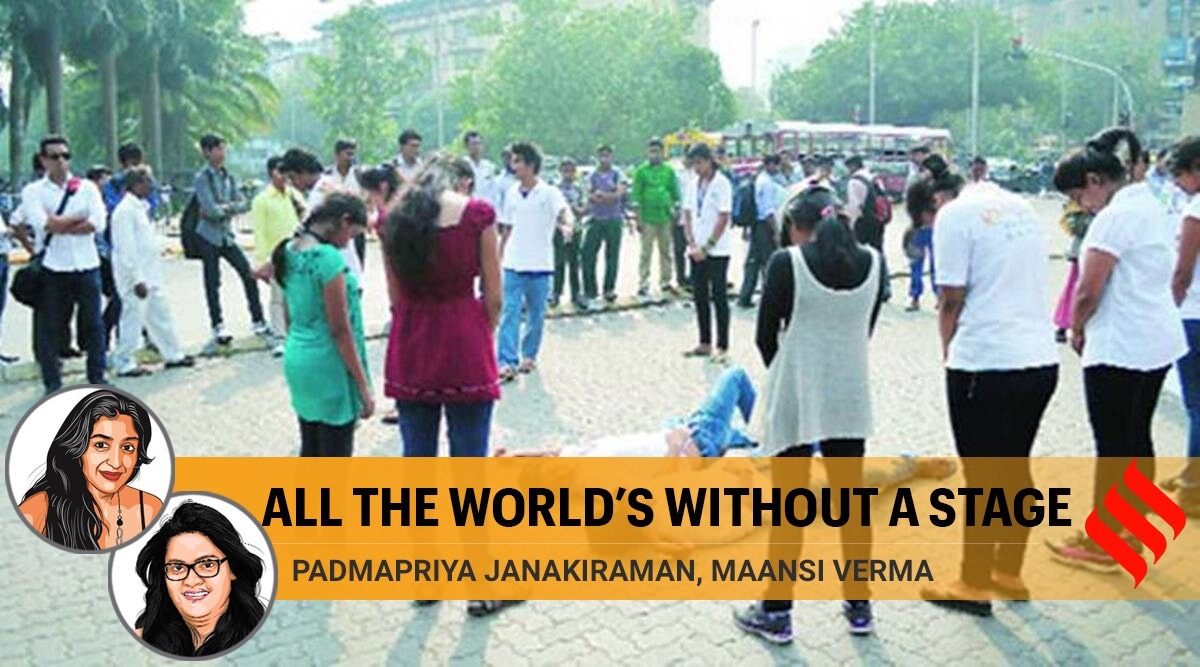 The arts community has never had it easy but the worry is about life post-COVID-19.
The arts community has never had it easy but the worry is about life post-COVID-19. During the pandemic, art became an expression of resilience for society. From people singing together in their balconies to PPE-clad doctors dancing to uplift their patients to graffiti expressing gratitude for health workers, people rediscovered the power of art to heal in these sordid times. But how resilient is the artist? “There are seven tribes of street performers in India — street magician, snake charmer, animal trainer, juggler, acrobat, street singer and behrupiya,” says Ishamuddin Khan, a former resident of the now-demolished Kathputli Colony slum in Delhi, himself a madari magician who has toured the world with his Indian rope trick. “But there are no official figures on the number of street performers in India. They are not acknowledged as artists.”
What is art and who is an artist? Within the expansive spectrum of the creative sector, many are jostling for recognition of their craft in a largely unorganised and ill-defined industry. Already having survived on uncertain incomes, the pandemic aggravated the vulnerable conditions of artists across the board. A British Council, FICCI and Art X Company study on the impact of COVID-19 on India’s creative economy reveals that self-employed professionals and MSMEs make up 88 per cent of the industry, 70 per cent of the respondents faced temporary business disruptions and 33 per cent lost up to half of their annual income. The anticipated lower levels of tourism, drop in purchasing power and reduction of funding for arts could amplify this further. Yet, in the government’s many financial assistance packages, artists found no mention.
In the absence of institutional support, the creative community came together to help their own. Among many other organisations, the Cine & TV Artists Association (CINTAA) stepped in to provide rations, funds, emotional and medical support to struggling artists and their families.
But financial distress wasn’t the only fallout of the pandemic — it closed avenues for artists’ self-expression. Kathak dancer Aditi Mangaldas responded by uploading videos of impromptu, unrehearsed performances. However, acknowledging her own privilege, Mangaldas pointed out how her company’s dancers struggled to find equipment and even space in their homes to perform and record their work. Dancer Dr Swarnamalya Ganesh created ‘I Am a Dancer under #Lockdown’, in which she herself handled the camera, editing and post-production. But she fears that the pandemic has increased the schism between those who will be more visible and the rest. The transition of art to online spaces has been a mixed bag. Amit Mutreja, lead vocalist of Azaadi The Band, argues that the internet has proved to be a more democratic space, yet his band turned down requests to perform online, as engaging a virtual audience was challenging. The liberty to express online is also affected by negative reactions and trolling of a scale not seen in the offline space.
Going online also requires special skills. Shyam Aravindakshan of Creative Dignity, a movement aiming to provide relief and rejuvenation to artisans, recalls the technical constraints in getting artisans online to sell their crafts. From cataloguing to professional photographs to quality checks before shipments to online payments, the artisans, having largely produced for local markets, struggled.
The arts community has never had it easy but the worry is about life post-COVID-19. From museums to dance, the digital is here to stay. Apart from learning new skills, artists will have to address how to reduce piracy, while revisiting settled notions of copyright, which otherwise get lost in a closed Zoom room performance. But audiences for staged performances will not disappear. Digital fatigue and the charm of the live performance, which highlights the symbiotic relationship between artist and audience, should reflect in deeper engagement by the audience. For sustained income avenues, the sector has to innovate by finding stronger connections across related areas like education and health.
The pandemic has brought to the disorganised artist community some improvements —collaboration to create new works, higher online visibility, and the ability to reach audiences and consumers differently. The Indian creative sector is seeing togetherness. But whether the community stands for sustained advocacy with the government and private sector for recognition and support remains to be seen.
Governments are increasingly interested in regulating the expression of art online. But what they need to focus on is reducing the already deep divide in the art world between the privileged and underprivileged. While some art forms will go digital, street/festival performances are difficult to showcase online. So, should they be lost? Governments should make a transparent directory of artists so that grants and other schemes reach the right beneficiaries. Apart from firming up anti-cyberbullying laws, the need of the hour is to recognise gig workers in this sector and strengthen policies that support cultural assets.
Not every form of art is economically self-sustainable. The downsizing of the creative sector will have a negative impact on jobs and revenues, levels of innovation, citizen well-being and the vibrancy and diversity of communities. Philanthropy for the arts has to grow. The appreciation for art’s contribution in providing society with a semblance of normalcy during these isolated times must be cultivated into respect and value for an artist’s labour. Else, as a country, we will be collectively responsible for the loss of our cultural lineage.
This article first appeared in the print edition on December 26, 2020, under the title “All the world’s without a stage”. Janakiraman is a National Award-winning film actress, dancer and public policy researcher. Verma is a consulting researcher with Sahapedia.